CNTF
-
Official Full Name
ciliary neurotrophic factor
-
Overview
Ciliary neurotrophic factor (CNTF); is a cytokine1 that supports survival and/or differentiation of a variety of neuronal cell types including sensory, sympathetic, and motoneurons.2 With these abilities, CNTF has implications for Parkinson's disease and -
Synonyms
CNTF; ciliary neurotrophic factor; HCNTF;
- Recombinant Proteins
- Cell & Tissue Lysates
- Transfected Stable Cell Lines
- Native Proteins
- GMP Proteins
- Protein Pre-coupled Magnetic Beads
- Chicken
- Human
- Mouse
- Pig
- Rabbit
- Rat
- Zebrafish
- E. coli
- E.coli
- HEK293
- HEK293F
- HEK293T
- Human Cell
- In Vitro Cell Free System
- Mammalian Cell
- Wheat Germ
- Yeast
- C
- His
- GST
- His (Fc)
- Avi
- Myc
- His(C
- ter)
- His|S
- His|T7
- MYC
- DDK
- Myc|DDK
- N/A
- N
- Strep II
- Background
- Quality Guarantee
- Case Study
- Involved Pathway
- Protein Function
- Interacting Protein
- CNTF Related Gene Family
- CNTF Related Research Area
What is CNTF protein?
CNTF (ciliary neurotrophic factor) gene is a protein coding gene which situated on the long arm of chromosome 11 at locus 11q12. The protein encoded by this gene is a polypeptide hormone whose actions appear to be restricted to the nervous system where it promotes neurotransmitter synthesis and neurite outgrowth in certain neuronal populations. The protein is a potent survival factor for neurons and oligodendrocytes and may be relevant in reducing tissue destruction during inflammatory attacks. The CNTF protein is consisted of 200 amino acids and its molecular mass is approximately 22.9 kDa.
What is the function of CNTF protein?
Ciliary neurotrophic factor (CNTF) is a neurotrophic factor that plays an important role in nerve system development, immune regulation, and inflammatory responses. It can promote the growth, differentiation and survival of neurons, and participate in neuronal migration and synaptic plasticity. In addition, CNTF can regulate immune cell function, including promoting the activation and proliferation of macrophages, inhibiting T cell apoptosis, and regulating the immune response of B cells.
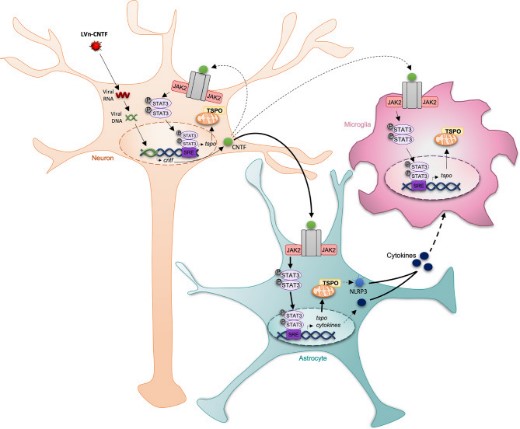
Fig1. Potential mechanisms involved in translocator protein (TSPO) overexpression in response to sustained CNTF exposure. Neurons were infected by a lentiviral vector (LVn) encoding for CNTF. (Kelly Ceyzériat, 2023)
CNTF Related Signaling Pathway
After binding to its receptor complex, CNTF activates JAK1/JAK2 kinase, which phosphorylates and activates STAT3 transcription factors, regulates target genes, and participates in cell survival, proliferation, and differentiation. In addition, CNTF can also activate MAPK signaling pathways, including ERK, JNK and p38 MAPK, which are involved in biological processes such as cell migration and proliferation. Other studies have shown that CNTF regulates cell survival and proliferation by activating the PI3K/AKT signaling pathway. In addition, CNTF can also regulate biological processes such as inflammatory response and immune response by activating the NF-κB signaling pathway.
CNTF Related Diseases
A mutation in this gene, which results in aberrant splicing, leads to ciliary neurotrophic factor deficiency, but this phenotype is not causally related to neurologic disease. Abnormal CNTF proteins are linked to a variety of diseases, including multiple sclerosis, Parkinson's disease, Alzheimer's disease and other neurological diseases. In addition, abnormal CNTF proteins have been linked to non-neurological diseases such as cardiovascular disease, diabetes, obesity, and cancer.
Bioapplications of CNTF
Due to its neuroprotective and neurotrophic effects, CNTF has been studied for the treatment of neurological injuries and diseases such as retinopathy and Parkinson's disease. In addition, CNTF has also been applied to in vitro culture of embryonic stem cells and neural stem cells to promote their growth and differentiation. In addition, CNTF has been used as a research tool to play an important role in the fields of neuronal growth, glial cell development, and the pathogenesis of nervous system diseases.
High Purity
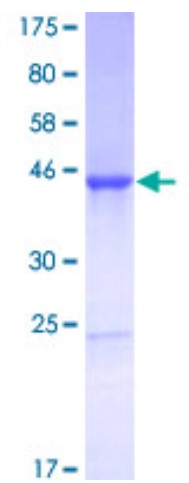
Fig1. SDS-PAGE (CNTF-1606H) (PROTOCOL for western blot)
.
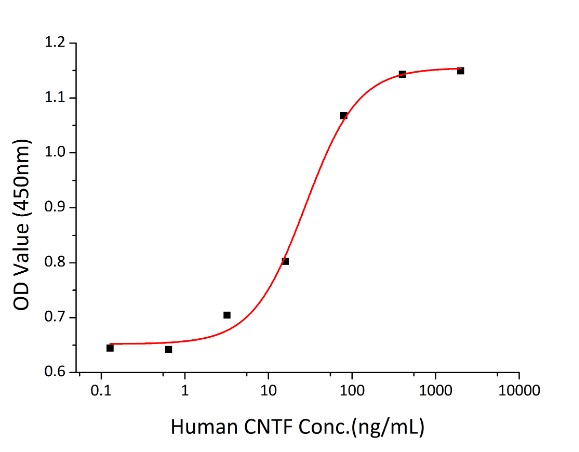
Fig2. Activity Data. (CNTF-2587H)
Case study 1: Kun Fan, 2017
Ciliary neurotrophic factor receptor α subunit (CNTFRα) and CNTF play important roles in neuron survival, glial differentiation and brain tumor growth. However, the molecular mechanisms of CNTFRα regulation and its clinical significance in glioma remain largely unknown.
Bioinformatics analysis revealed CNTFRα was overexpressed in lower grade gliomas (LGG) compared with glioblastoma (GBM) and normal brain specimens. This observation was further validated with clinical specimens and functionally verified using demethylating agents. Furthermore, the role of CNTFRα in glioma proliferation and apoptosis through the PI3K/AKT pathways was demonstrated by supplementation with exogenous CNTF in vitro and siRNA knockdown in vivo. This study demonstrated that hypomethylation leading to CNTFRα up-regulation, together with autocrine expression of CNTF, was involved in glioma growth regulation.
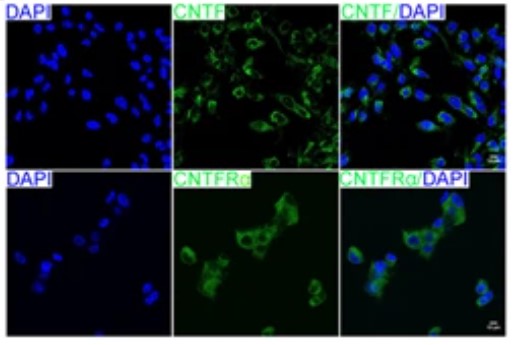
Fig1. CNTF can act as an autocrine ligand in glioma. IHC analysis of CNTF and CNTFRα expression in glioma tissues.
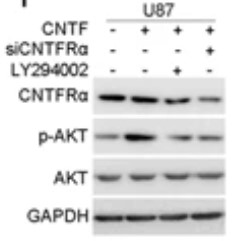
Case study 2: Khushbu K Modi, 2013
Ciliary neurotrophic factor (CNTF) is a promyelinating trophic factor, and the mechanisms by which CNTF expression could be increased in the brain are poorly understood. Acetylsalicylic acid (aspirin) is one of the most widely used analgesics. Interestingly, aspirin increased mRNA and protein expression of CNTF in primary mouse and human astrocytes in a dose- and time-dependent manner. H-89, an inhibitor of PKA, abrogated aspirin-induced expression of CNTF. Aspirin increases the expression of the Cntf gene via the activation of CREB.
Furthermore, the team demonstrate that aspirin-induced astroglial CNTF was also functionally active and that supernatants of aspirin-treated astrocytes of wild type, but not Cntf null, mice increased myelin-associated proteins in oligodendrocytes and protected oligodendrocytes from TNF-α insult. These results highlight a new and novel myelinogenic property of aspirin, which may be of benefit for multiple sclerosis and other demyelinating disorders.
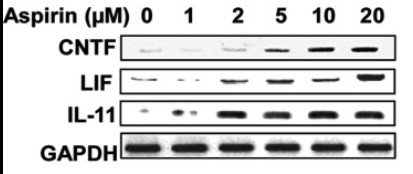
Fig3. Aspirin stimulates the expression of CNTF family of cytokines (CNTF, IL-11, and LIF) in primary mouse astrocytes.
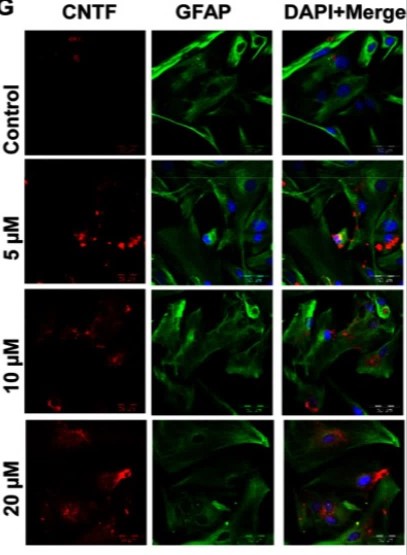
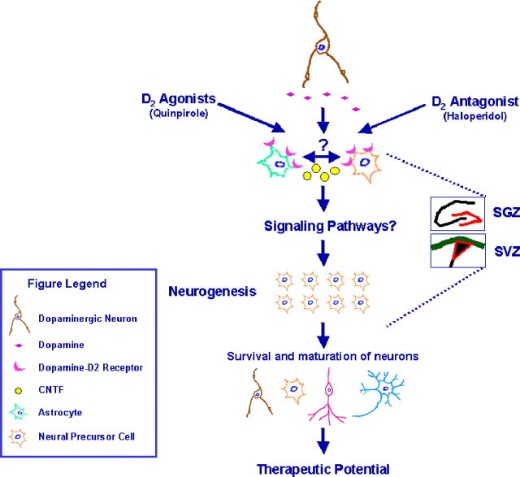
Fig1. Dopamine D2 receptors regulate adult neurogenesis via CNTF. (Mayra Mori, 2008)
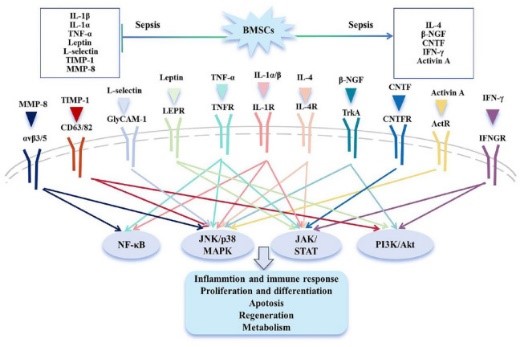
Fig2. Cytokine-mediated signaling pathways involved in sepsis following BMSCs transplantation. (Guanghui Xiu, 2023)
CNTF involved in several pathways and played different roles in them. We selected most pathways CNTF participated on our site, such as Cytokine-cytokine receptor interaction, Delta-Notch Signaling Pathway, Jak-STAT signaling pathway, which may be useful for your reference. Also, other proteins which involved in the same pathway with CNTF were listed below. Creative BioMart supplied nearly all the proteins listed, you can search them on our site.
| Pathway Name | Pathway Related Protein |
|---|---|
| Cytokine-cytokine receptor interaction | IL6;IL25;TNFRSF13B;M17;IL10RA;IFNL3;BMPR1B;CSF3;BMPR2 |
| Delta-Notch Signaling Pathway | HEY2;HEY1;CNTF;ASCL1A;CNTN1B;NOV;HIVEP3;CNTFR;SMAD3B |
| Jak-STAT signaling pathway | IL19;IL11RA2;IL11RA;IL15;STAT6;CCND2A;IFNK;AOX3L1;HRAS |
CNTF has several biochemical functions, for example, ciliary neurotrophic factor receptor binding, growth factor activity, interleukin-6 receptor binding. Some of the functions are cooperated with other proteins, some of the functions could acted by CNTF itself. We selected most functions CNTF had, and list some proteins which have the same functions with CNTF. You can find most of the proteins on our site.
| Function | Related Protein |
|---|---|
| ciliary neurotrophic factor receptor binding | Ctf2;LIFR;IL6ST;CNTF;CLCF1 |
| growth factor activity | LEFTY1;NODAL;VEGFAB;KITLG;FGF18;AREG;GDF3;GDF15;HDGF |
| interleukin-6 receptor binding | CNTF;ADAM17;ERAP1;IL6;PYCARD |
| protein binding | SRPK2;HIST1H2BB;GRK6;MED26;VPS4A;AMPD2;LAMTOR3;PPARD;SCRIB |
CNTF has direct interactions with proteins and molecules. Those interactions were detected by several methods such as yeast two hybrid, co-IP, pull-down and so on. We selected proteins and molecules interacted with CNTF here. Most of them are supplied by our site. Hope this information will be useful for your research of CNTF.
TRIP6; KRT40; IL6ST; LIFR; STK16; VHL; EIF3E; ICA1; EXT1; EXT2
- Q&As
- Reviews
Q&As (7)
Ask a questionCNTF plays a crucial role in regulating glial cell function. It can modulate astrocyte and oligodendrocyte differentiation, promote myelination, and regulate the release of neurotrophic factors from glial cells. CNTF also influences glial cell-mediated immune responses and their interaction with neurons in various pathological conditions.
CNTF activates multiple signaling pathways, including JAK/STAT, PI3K/AKT, and MAPK/ERK, in both neurons and glial cells. These pathways play crucial roles in regulating gene expression, cell survival, differentiation, and synaptic plasticity.
CNTF plays a significant role in modulating neuroinflammatory responses. It can regulate the activation and function of microglia and astrocytes, leading to the production of pro-inflammatory or anti-inflammatory factors. CNTF also influences the recruitment and activation of immune cells in the central nervous system.
CNTF has been shown to modulate synaptic plasticity, which underlies learning and memory processes. It promotes the formation and stabilization of synapses, regulates neurotransmitter release, and influences synaptic strength and plasticity through its interaction with specific receptors and downstream signaling molecules.
Developing CNTF-based therapies faces challenges such as the need for targeted delivery to specific brain regions, potential side effects due to systemic administration, and the need to optimize dosing and treatment regimens. Additionally, understanding the precise mechanisms of CNTF action and identifying suitable patient populations for treatment are important considerations.
CNTF exerts neuroprotective effects by promoting neuronal survival and regeneration through the activation of various intracellular signaling pathways. It enhances the expression of neurotrophic factors, regulates apoptosis-related genes, and stimulates axonal outgrowth and synaptic remodeling.
CNTF shows promise as a potential therapeutic approach for neurodegenerative diseases, such as amyotrophic lateral sclerosis and retinal degeneration. Its neuroprotective and neurotrophic effects make it a potential candidate for promoting neuronal survival, preventing neurodegeneration, and improving functional recovery in these conditions.
Customer Reviews (3)
Write a reviewIt is highly durable and meets the requirements for long-term experiments.
A trusted aide, this reagent is instrumental on the path of scientific inquiry.
Employing this protein reagent allows me to obtain precise structural information in protein interaction studies, offering critical insights for a deeper understanding of protein function.
Ask a Question for All CNTF Products
Required fields are marked with *
My Review for All CNTF Products
Required fields are marked with *


